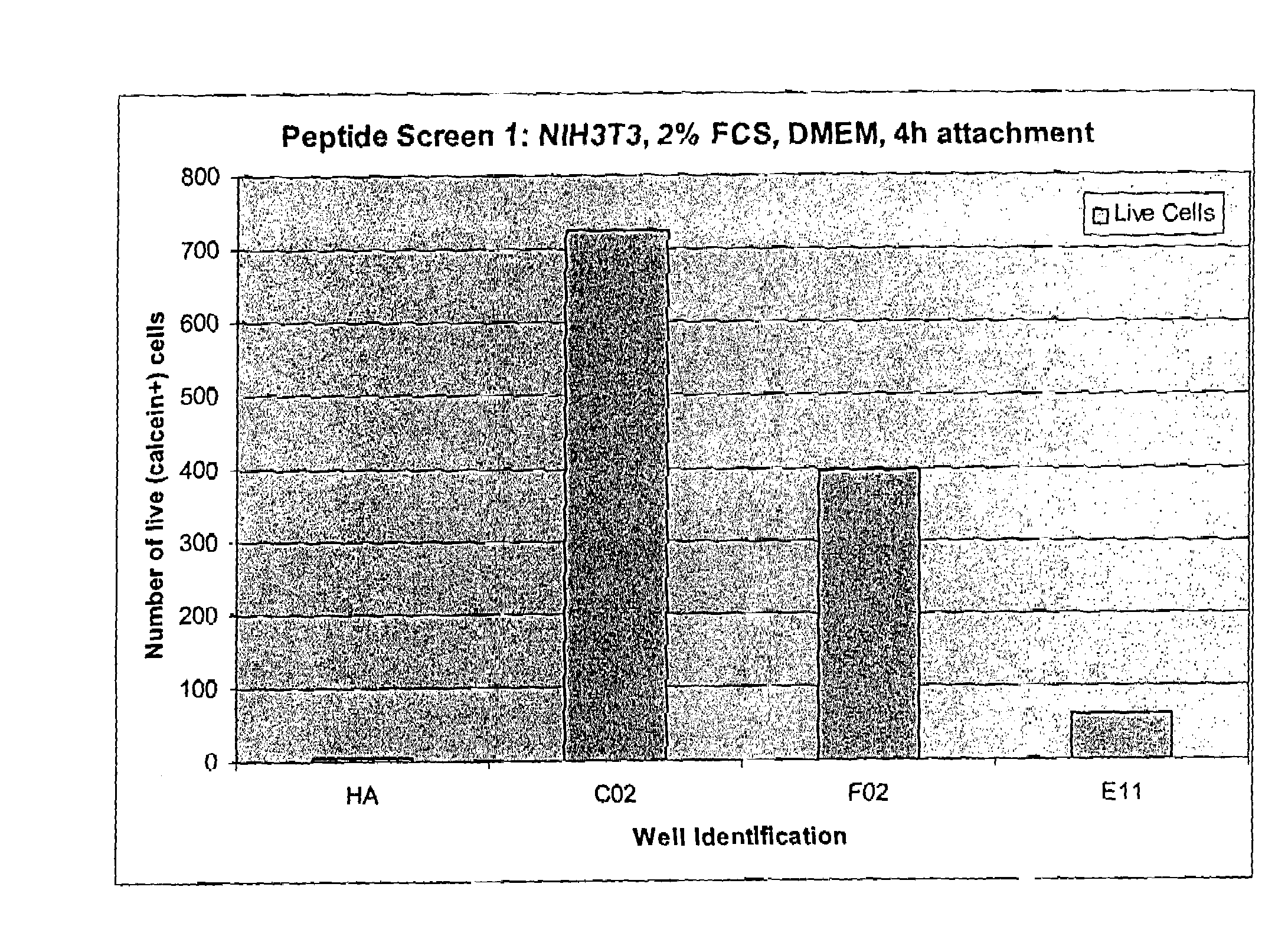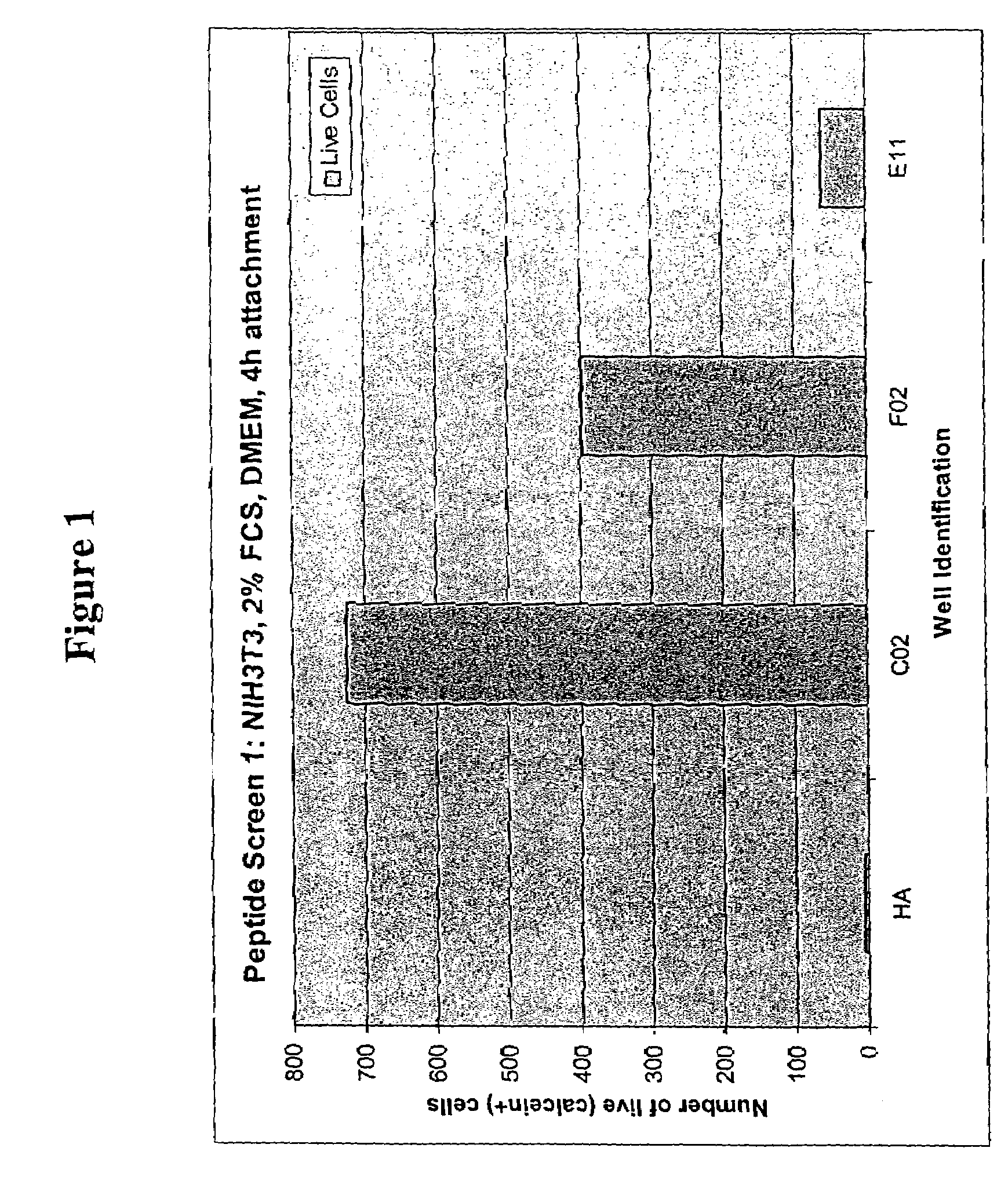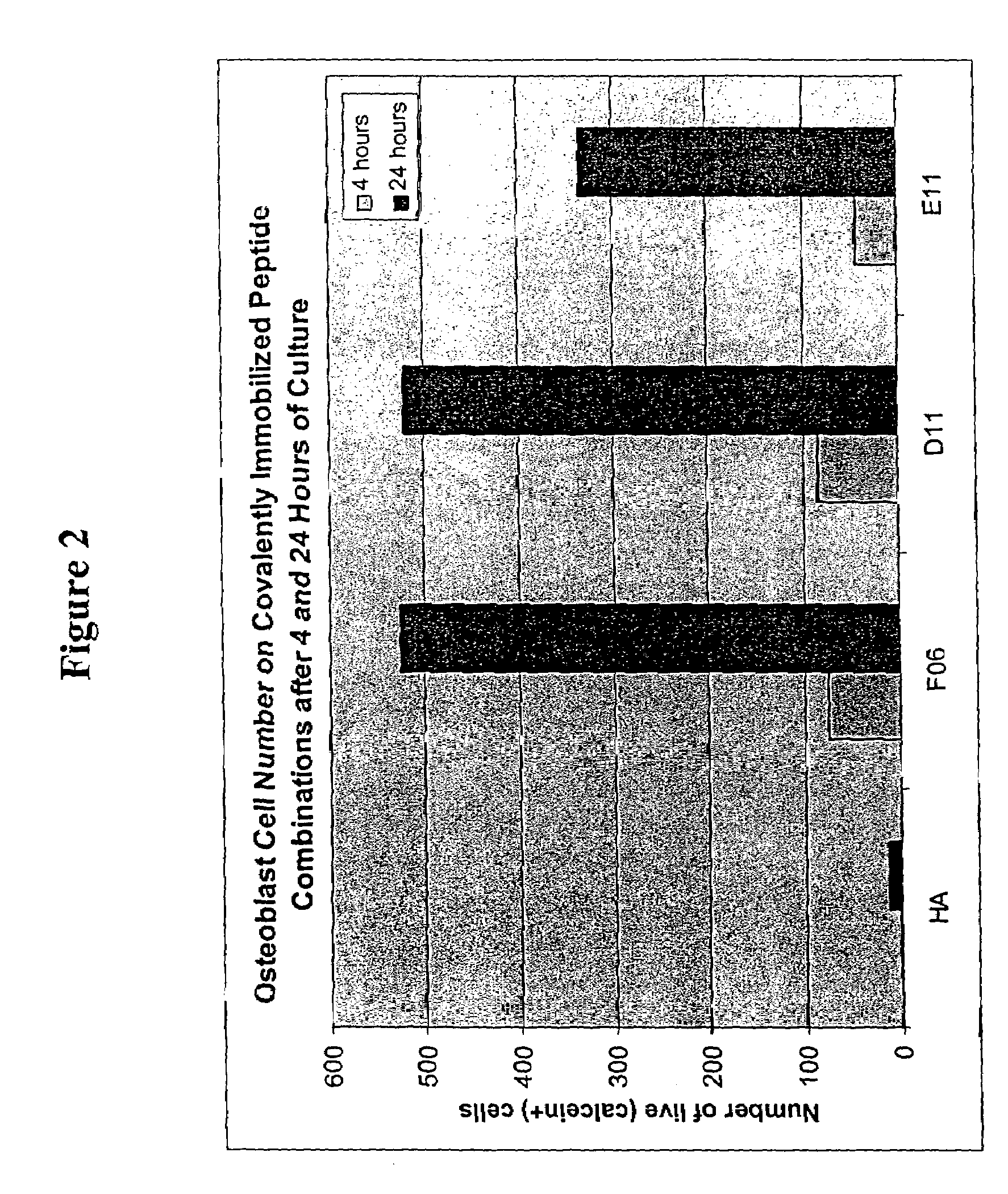Peptides for enhanced cell attachment and growth
a technology of peptides and cell attachment, applied in the field of peptides, can solve the problems of high cost of preparing synthetic peptides, low economics of incorporation of peptides into the bulk of the polymer, and large concentrations of peptides, so as to promote cell attachment, growth, differentiation and further function.
- Summary
- Abstract
- Description
- Claims
- Application Information
AI Technical Summary
Benefits of technology
Problems solved by technology
Method used
Image
Examples
example 1
Identification and Testing of Cell Adhesion Promoting Peptides
[0106]Thirty-nine peptides were identified by screening a peptide library (“BDT library”). One peptide, GRGDS (SEQ ID NO: 22), served as positive control that was known to facilitate cell attachment due to the presence of the RGD motif. The 40 peptides were divided into 10 groups of four (as shown in Table 1 below) and immobilized by periodate oxidation of HA, coupling of peptide in presence of cyanoborohydride to HA-surfaces of individual culture “vessels” in wells of a 96-well microplate. Each well had covalently coupled combinations of peptides as follows:
[0107](a) a combination of four peptides listed as Groups 1–10 in Table 1.
[0108](b) a combination of 8 peptides that was made up of two or more of Groups 1–10; or
[0109](c) a combination of all 40 peptides of Table 1.
[0110]
TABLE 1GROUP 1GRGDSAKIFFAAIKKIKYYY(SEQ ID NO: 22)(SEQ ID NO: 23)(SEQ ID NO: 24)(SEQ ID NO: 25)GROUP 2KFAFIFIKLMFFFIKEFIKK(SEQ ID NO: 26)(SEQ ID NO: ...
example 2
[0119]39 peptides were identified with the BioTherapy peptide screen using media optimization technology as disclosed herein. As in Example 1, the GRGDS peptide sequence served as a positive control. Peptides were chosen based on biological activity for either cell secretion of, for example, various growth factors or proteins, or cell adhesion.
[0120]The 39 peptides and GRGDS were immobilized on 60 wells as in Example 1. In the experiments either single peptides or combinations thereof, selected from Factors 4 and 5 (see Table 1) were added to each well.
[0121]Hyaluronic acid (HA) was used to create an inert coating on a PS surface as described herein above and in U.S. patent application Ser. No. 10 / 259,797. Then bioconjuguation techniques such as sodium periodate oxidation and reductive amination disclosed herein were used to covalently couple peptide(s) to the inert HA. Any noncovalently attached peptide(s) were removed by a salt-acid wash and vigorous water rinse.
[0122]Other suitab...
PUM
| Property | Measurement | Unit |
|---|---|---|
| pressure | aaaaa | aaaaa |
| pressure | aaaaa | aaaaa |
| pressure | aaaaa | aaaaa |
Abstract
Description
Claims
Application Information
 Login to View More
Login to View More - R&D
- Intellectual Property
- Life Sciences
- Materials
- Tech Scout
- Unparalleled Data Quality
- Higher Quality Content
- 60% Fewer Hallucinations
Browse by: Latest US Patents, China's latest patents, Technical Efficacy Thesaurus, Application Domain, Technology Topic, Popular Technical Reports.
© 2025 PatSnap. All rights reserved.Legal|Privacy policy|Modern Slavery Act Transparency Statement|Sitemap|About US| Contact US: help@patsnap.com



